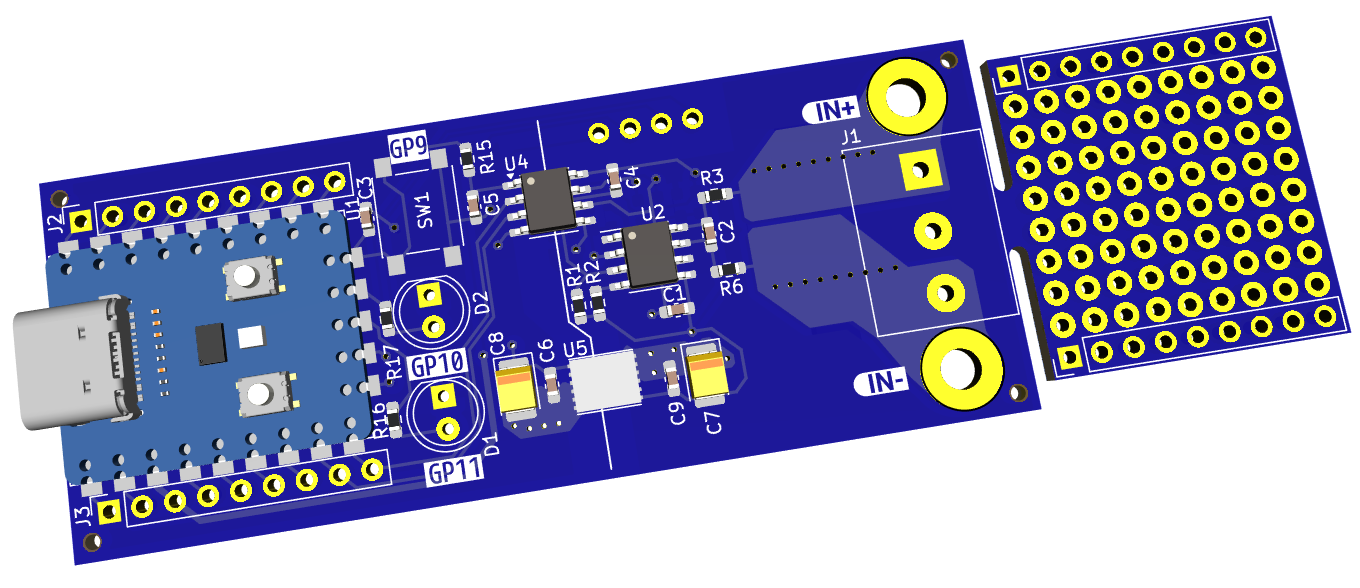While I was measuring the consumption of other projects I realised that I really need to take care of the wiring. Especially the GND connection. Eventually I destroyed one chip through misconnection.
That led me to the point that the device needs to be isolated. Only this way it is safe to use two of them to perform efficiancy measurements.
There are two ways of isolating the PPPM:
- Isolating the input USB connection.
- Isolating the onboard power and I2C.
I decided to to the latter because I have no access to the USB-C connection on my PCB.
After a brief search online I found the I2C isolating chip: ISO1641B from TI. It is very easy to use and needs only two external bypass capacitors. The Clock is transmitted unidirectional and the data is bidirectional.
For the power isolation is was a bit harder to find a good space saving solution. Usually there are chips that drive a discrete transformer and on the secondary side you need a LDO to regulate the correct voltage. All that leads to a high BOM count and needed space.
But I was lucky and discovered that TI is coming up with a highly integrated, space saving and cheap chip that does all of this! It is the UCC33420.
To make space for the two additional chips I moved some components around. The shunt resistor and a couple of resistors moved to the back side of the PCB. Now they can be changed without removing the OLED. I should have done this before!
The layout is done and the PCBs are ordered! Now let's wait for it and that the transformer chip becomes public available.
 I disabled the THT components to see below the OLED display.
I disabled the THT components to see below the OLED display.
Discussions
Become a Hackaday.io Member
Create an account to leave a comment. Already have an account? Log In.